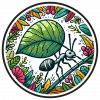We live in an age of data. Facebook is changing how we think of social structures and Twitter is upending news. Retailers have developed algorithms that can predict purchasing habits. Thousands of satellites are collecting image data of the earth's surface.
In a recent paper examining latest developments in conservation technology, Emerging Technologies to Conserve Biodiversity, Dr. Joppa and his colleagues consider the role that apps such as iNaturalist and eBird are playing in aggregating large amounts of previously inaccessible data. Other valuable datasets that lend new insights on the natural world include the Global Biodiversity Information Facility and Movebank, which monitors how animals move. Microsoft Research is using the IUCN Red List of Threatened Species and the Living Planet Index to gauge trends over time that will support better policy recommendations.
In creating the Madingley Model, Microsoft Research and the UN Environment Programme World Conservation Monitoring Centre are increasingly able to assess how interactions among individual organisms shape the natural world. Dr. Joppa discusses these and other concepts in his talk, Big Data and Conservation: Deluge or Drought? at the 2015 Fuller Symposium.





Add the first post in this thread.